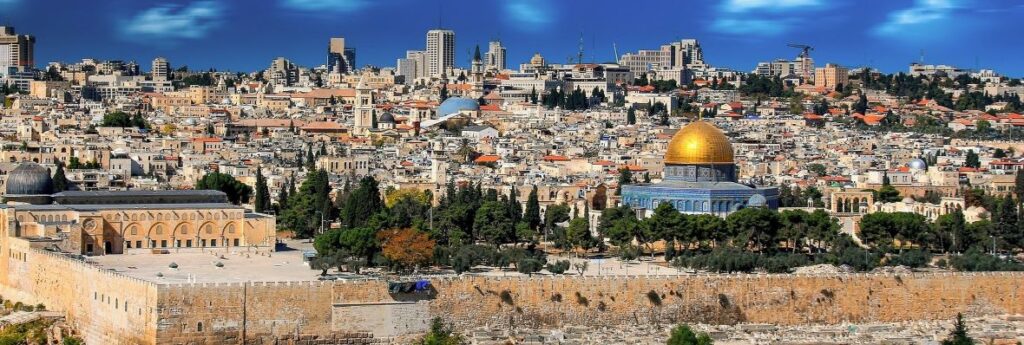Israel has announced that it will allow all tourists – both vaccinated and unvaccinated tourists, and of all ages – to enter the country beginning March 1 as the latest wave of the coronavirus recedes. Visitors will be required to take two PCR coronavirus tests, before their flights and upon landing.
Arrivals will further be required to quarantine in their hotel until they receive the result of a negative PCR or 24 hours, whichever comes first. (There will not be an option of a lab-based antigen test.)
“We are seeing a constant decline in morbidity data, so it is time to gradually open up,” Prime Minister Naftali Bennett said.
Israel has largely restricted the entry of foreign tourists for the past two years and virtually closed its skies to foreign visitors late last year with the arrival of the highly contagious omicron variant. Recent data has shown a sharp drop in new cases, mirroring patterns in other countries around the world.
“We are thrilled that the government is taking the necessary steps to fully reopen Israel to all travellers around the world,” said Eyal Carlin, Israel Tourism Commissioner for North America. “This ease in restrictions allows for more travellers to enter our country while also ensuring the health and wellbeing of all. Despite the country’s closure over the past two years, we are back and better than ever and travellers can expect refurbished historical sites with increased accessibility, new hotels, new museums, and more.”
The tourist board has compiled a list of some of Israel’s bucket list landmarks, attractions, and new developments for returning of first-time visitors:
Historical landmarks
• Temple Mount: The Temple Mount is considered to be the holiest place in Jerusalem and a place of importance to those in the Islam, Christianity, and Judaism faiths.
• Al Aqsa Mosque: The Al Aqsa Mosque is one of the holiest sites in the Islamic faith. The mosque stands on The Temple Mount compound in Jerusalem. In the 11th century during the Crusaders’ times, Crusader kings converted the Al-Aqsa Mosque to a royal palace. In the 12th century, it became the headquarter of the Knights of Templar. Later in the 12th century, Sultan Saladin took it, followed by Mamluks in the mid 14th century.
Museums
• Tel Aviv Museum of Art: The Tel Aviv Museum of Art holds some of Israel’s most comprehensive collections of modern, contemporary, and Israeli art. The museum has an impressive collection of diverse exhibitions, old masters, photography displays, a performance hall, and more.
• Dead Sea Museum: The Dead Sea Museum is located Maeen subdistrict, Jordan. It is dedicated to showcasing the history of the Dead Sea and how civilizations developed around it. One of the most popular aspects of this museum is showing the human impact on the Dead Sea as well as the benefits that the existence of this sea has brought to the civilizations of the Middle East.
• MadaTech, National Museum of Science Technology and Space: Located in Haifa, the venue is Israel’s largest science museum. Established in 1983, MadaTech is housed in the historic landmark, “Technion building”, located at the heart of a 2.8-hectare green campus in mid-town Haifa. The campus also features the Northern Garden, where a palm tree planted by Albert Einstein in 1923 still stands.
• Eretz Israel Museum: Eretz Israel Museum is a multi-sensory museum focusing on the history and culture of Israel. Unique for several reasons, the Eretz Israel Museum is especially unusual because its grounds encompass the archeological site of Tel Qasile, dating back to the 12th century B.C.E. The museum houses impressive, permanent collections of coins, mosaics, and Jewish folkloric objects from various periods and regions.
Archaeological discoveries
• Second Synagogue from the Second Temple Period Found in the Migdal Excavations: A 2,000-year-old synagogue from the Second Temple period was recently discovered in Migdal which is a large Jewish settlement. Migdal served as the main base for Yosef Ben Matityahu in his war against the Romans during the Great Revolt. This is the first time in history that two synagogues have been found in a single settlement from the Second Temple period, the time when Jesus of Nazareth was active.
• Ancient treasure uncovered from two shipwrecks off Caesarea coast: In recent months near Caesarea, a number of fascinating artifacts were discovered from the wrecks of two ships that foundered off the coast of Caesarea in the Roman and Mamluk periods. These were discovered during an underwater survey conducted by the Marine Archaeology Unit of the Israel Antiquities Authority. The ships’ cargoes and the remains of their wrecked hulls were found scattered in shallow water at a depth of about 4 m, scattered on the sea floor.
• Prehistoric human vertebra, approximately 1.5 million years old, discovered in the Jordan Valley: A 1.5-million-year-old human vertebra was discovered in Israel’s Jordan Valley by researchers, who believe that ancient human migration from Africa to Eurasia was not a one-time event, but occurred in waves.
Gal Hana, Consul for Tourism and Director for Canada’s representative Israel Ministry of Tourism office says, “We are excited that both vaccinated and unvaccinated Canadians can now take advantage of visiting Israel once again… The beautiful country of Israel is welcoming visitors back with open arms – it’s the perfect time to explore.”

